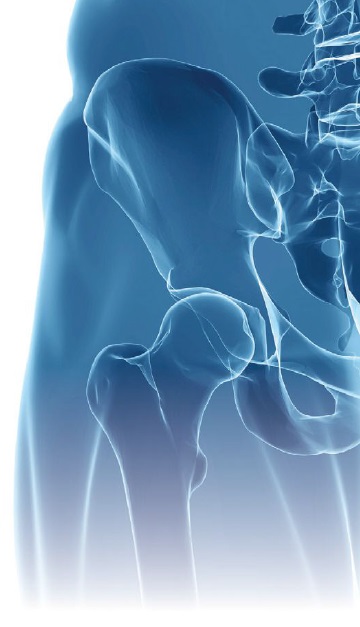Sliding soft surfaces
Drs. Wilfred T. Tysoe & Nicholas D. Spencer | TLT Cutting Edge June 2014
Measuring the speed dependence of hydrogel friction helps us understand natural lubricated systems.

www.canstockphoto.com
SLIDING INTERFACES IN HUMANS AND ANIMALS, either in articulating joints or between the eyelid and the eye, are required to undergo thousands of cycles per day for many years. The contacting materials invariably consist of nanoporous, hydrophilic polymer networks that are permeable to water. Synthetic networks of hydrophilic polymer chains, such as those made from polyacrylamide, have been used as models to study the tribological interfaces encountered in biological systems.
Most of these experiments measured the friction between the hydrogel and hard, impenetrable counterfaces, while biological interfaces are invariably made from identical Gemini contacts. The group of professor Greg Sawyer, along with colleague Thomas Angelini from the University of Florida, remedied this deficiency by comparing the friction of a Gemini interface consisting of a polyacrylamide, hydrogel ball sliding against a hydrogel substrate. To gain a deeper understanding of the friction behavior, they compared the results with those for a glass ball sliding against a hydrogel substrate and a hydrogel ball sliding against a glass substrate. In all cases, the hydrogels were carefully hydrated with ultrapure water.
The results showed some remarkable differences in behavior for the three contact conditions. For a migrating contact of a glass ball sliding against a hydrogel, where the position of the hydrogel contact changes as the ball slides, the friction coefficient was found to decrease rapidly with sliding speed. For a stationary contact of a hydrogel ball sliding against glass, a much weaker sliding-speed dependence was found, while the Gemini contact had very low friction (μ< about 0.06) with no detectable velocity dependence.
Insights into this behavior came from measuring the friction as a function of the time of the experiment for the migrating and stationary contacts, where the data appeared to scale as time to the power of ~1/3. To understand this behavior, Sawyer used a law proposed by French hydrologist Henry D’Arcy in the middle of the 19th Century to study the permeation of water through sand, which successfully describes fluid flow through porous media such as hydrogels or sponges, as well as sand or clay. The law states that the fluid flow rate is proportional to the pressure drop across the material—in the case of the friction experiments, the contact pressure. Making some simplifying assumptions, Sawyer found that the contact area varied as t
1/3, rationalizing the observed friction behavior if the friction force scales with contact area.
This now sets the stage for understanding the velocity dependence of the friction for the various contacts. In the migrating, glass-ball-on-hydrogel contact, where the friction coefficient depends strongly on speed, larger velocities leave less time for the contact to grow, producing a lower contact area and, hence, lower friction. In contrast, the contact in the static, hydrogel-onglass interface is at one spot on the gel, so it is under persistent load. Thus the contact area does not vary strongly with speed, producing a weak velocity dependence.
The Gemini, gel-on-gel situation is a combination of both conditions in which the probe contact does not change, while that of the substrate does. However, since the friction remains constant and low for all sliding velocities, its behavior is not a simple superposition of the two asymmetric contacts. It is suggested that such low friction arises because both of the surfaces at the Gemini interface are persistently coated with water, minimizing the possibility of polymer-polymer interactions. The polymers are themselves also hydrated, further reducing interactions.
It appears that such hydrogel interfaces can help us gain insight into the fundamental processes occurring in biological lubricated systems. Indeed, extending these ideas to cartilage, which is about two orders of magnitude less permeable than hydrogels, suggests that the fluid permeation timescale for hip or knee joints is several hours. In other words, standing for long periods of time does not necessarily cause high startup friction.
FOR FURTHER READING:
1.
Dunn, A.C., Sawyer, W.G. and Angelini, T.E. (2014), “Gemini Interfaces in Aqueous Lubrication with Hydrogels,”
Tribology Letters,
54 (1), p. 59.
 Eddy Tysoe is a Distinguished Professor of Physical Chemistry at the University of Wisconsin-Milwaukee. You can reach him at wtt@uwm.edu
Eddy Tysoe is a Distinguished Professor of Physical Chemistry at the University of Wisconsin-Milwaukee. You can reach him at wtt@uwm.edu.
 Nic Spencer is professor of surface science and technology at the ETH Zurich, Switzerland. Both serve as editors-in-chief of STLE-affiliated Tribology Letters journal. You can reach him at nspencer@ethz.ch
Nic Spencer is professor of surface science and technology at the ETH Zurich, Switzerland. Both serve as editors-in-chief of STLE-affiliated Tribology Letters journal. You can reach him at nspencer@ethz.ch.